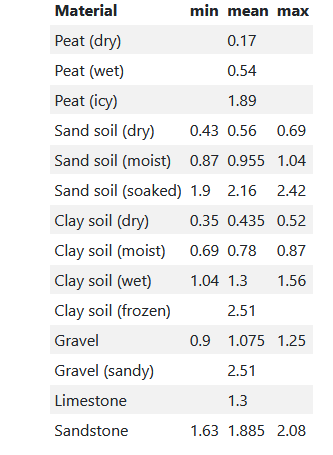Can you use the 1.2K.m/W BICC value for soil resistivity if you haven't had the soil tested or should you stick with BS7671 value of 2.5K.m/W? As this has a big impact on cable sizes?
Can you use the 1.2K.m/W BICC value for soil resistivity if you haven't had the soil tested or should you stick with BS7671 value of 2.5K.m/W? As this has a big impact on cable sizes?
Depends where on the planet you are. Remember that BS7671 is not just for the UK , but also for many of the 230V parts of the middle east, Malta and probably a few other hot dry places too. The UK soil, especially where it is wet clay, is a lot better conductor of heat than the dry dust worst case, and the BICC figures reflect this. Actually so does BS7671, more or less, if you put in the same values and use the rating factors - just the default is more cautious.
UK DNOs and similar know the soils on their patch, and may appear to sail closer to the wind than BS7671 allows, but have few problems in reality.
Some typical figures for the inverse of what you need - conductivity in W/(m.K)
note the huge effect on sand when it goes from dry (~ 0,5 W/(m.K) == 2.0 K.m/W )
to saturated (~ 2 W/(m.K) == 0.5 K.m/W )
Clay has less of a range, unless its frozen when suddenly its cooling properties are superb.
Really the cooling of a test cable should be measured if there is a lot at stake, but usually its not worth the aggro, and one has to be confident as to how things will vary with season.
Mike
Thanks for this Mike, just out of interest whereabouts did you get the table from?
Thanks for this Mike, just out of interest whereabouts did you get the table from?
We're about to take you to the IET registration website. Don't worry though, you'll be sent straight back to the community after completing the registration.
Continue to the IET registration site